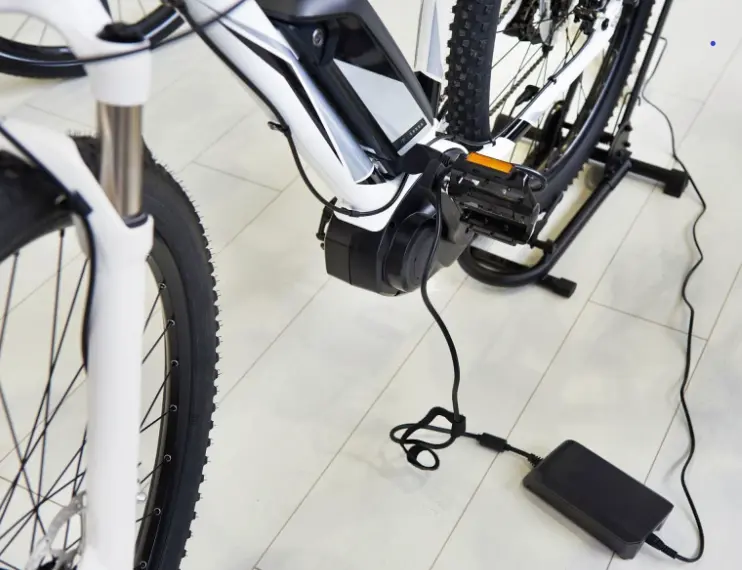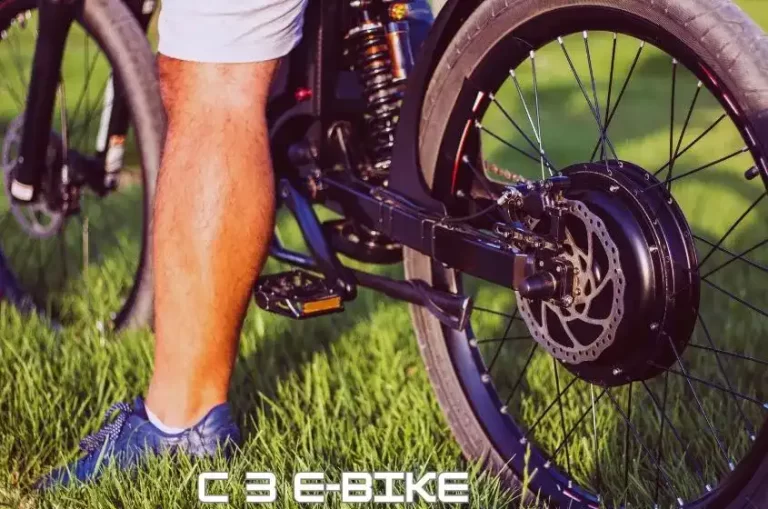Tips when mountain biking in the snow
You’re ready to shred some powder but not on skis you want to hit the trails on your mountain bike. Mountain biking in the snow is challenging but can be incredibly rewarding. The crisp air the snow covered landscape the thrill of navigating slippery terrain all add up to an unbeatable winter adventure. Before you head out though there are a few tips you should keep in mind to ensure you have an epic ride and make it back in one piece.

Things like using the right tire for the conditions dressing for the weather choosing a trail suitable for snow biking, riding cautiously, and bringing essential gear can help make your snowy single track session safe and fun. Follow these tips and you’ll be carving fresh tracks in no time. read more
Prepare Your Bike for Winter Mountain Biking
If you want to go mountain biking in the snow you’ll need to prepare your bike to handle the challenging conditions.
- If you are interested to buy a bike : Click here
Tires
Swap your regular tires for studded snow tires that can grip slick icy trails. Studded tires have small metal spikes that dig into the snow for traction. You’ll want tires with an aggressive tread pattern made of a soft pliable rubber compound.
Brakes
Disk brakes are best for snow biking since they provide strong stopping power even when wet. Make sure your brake pads still have plenty of life left in them. It’s also a good idea to install brake cable insulators to prevent them from freezing.
Drivetrain
Use a front derailleur with a clutch mechanism to prevent your chain from dropping on bumpy snowy terrain. Apply a waterproof chain lube or wax to your chain and cassette to keep everything running smoothly.
Other Tips
Dress for frigid weather in insulated clothing waterproof gloves hat and boots. Take it slow until you get a feel for how your bike handles in the snow. Ride with a buddy in case anything happens.
If riding at night install high powered bike lights to illuminate the trail. Carry essential tools and supplies in case you get stranded. Most of all take it easy and have fun Snow biking can be a blast if you’re prepared. With the right gear and caution you’ll be ready to hit the snowy single track.
Dress Appropriately for Cold Weather Riding
To enjoy mountain biking in snowy conditions you’ll want to bundle up. Dressing for cold-weather riding is key to staying comfortable and avoiding hypothermia.
Layers are your friend
Wear thermal undergarments to keep your core warm then add insulating layers like fleece or down. Top it off with a waterproof jacket and pants. You can always remove layers if you get too hot.
Consider wearing:
- Thermal top and bottom
- Fleece jacket
- Waterproof jacket and pants
- Winter cycling gloves or mittens
- Wool socks
- Winter boots or insulated cycling shoes
- Neck gaiter or balaclava
- Wool cap that fits under your helmet
Choose gear designed for winter sports
Look for clothing specifically meant for activities like snowshoeing skiing or winter hiking. These provide more insulation and weather resistance than regular athletic wear.
You’ll also want gear that’s breathable and moisture wicking to avoid getting soaked in sweat. Synthetic fabrics like polypropylene work better than cotton in cold weather.
Don’t forget eye protection from the wind and sun. Clear lenses with UV protection are a must for winter riding.
Bundling up properly lets you enjoy mountain biking no matter the weather. With the right clothing and gear riding in the snow can be a fun new challenge and a great way to stay active in winter.
Ride Safely in Snowy Conditions
When mountain biking in snowy conditions your safety is the top priority. The trails can become slick and visibility may be reduced so take extra precautions.
Adjust Your Technique
Riding in snow requires an adjusted technique. Apply your brakes gently and avoid sudden turns or stops to prevent losing control of your bike. Shift to a lower gear to increase your traction. Stand up on your pedals when going up hills for more power while distributing your weight.
Go Slow
Take it slow especially when descending. The snow can obscure potential hazards like ice rocks or branches under the surface. Give yourself plenty of time to react in case you need to brake or change direction quickly. It’s better to go too slow than too fast you can always speed up but you can’t undo a crash.
Dress For The Conditions
Be sure to wear waterproof gloves or mittens insulated boots thermal layers a waterproof jacket and pants and consider wearing goggles to protect from wind and improve visibility. You’ll stay warmer and drier allowing you to enjoy the ride.
Ride With Others
There is safety in numbers. Try to ride with a partner or group in case anything happens. You’ll appreciate the company and extra security on snowy trails. Let someone know your route and schedule before heading out as well.
Exploring mountain bike trails blanketed in snow can be a rewarding adventure. By taking some basic precautions riding cautiously and properly equipping yourself for the conditions you’ll have an enjoyable ride and get to see nature in a whole new way. The key is to have the right mindset go in with realistic expectations of how it may differ from summer riding and stay focused on safety. If at any point you feel uncomfortable don’t hesitate to turn around. Your safety is the top priority.
For more information:
- visit our site: Themotostreet
Conclusion
So there you have it some essential tips for enjoying a fun winter mountain biking adventure. Just remember to take it slow dress for the weather consider the trail conditions and bring the right gear. Mountain biking in the snow is a blast once you get the hang of it. The fresh snowfall transforms familiar trails into a winter wonderland. The crisp air fills your lungs and the only sounds are the crunch of snow under your tires and the occasional bird chirping in the trees. Get out there and experience the peaceful solitude of mountain biking in the winter. You’ll be glad you did. Ride safe and have an awesome time.





